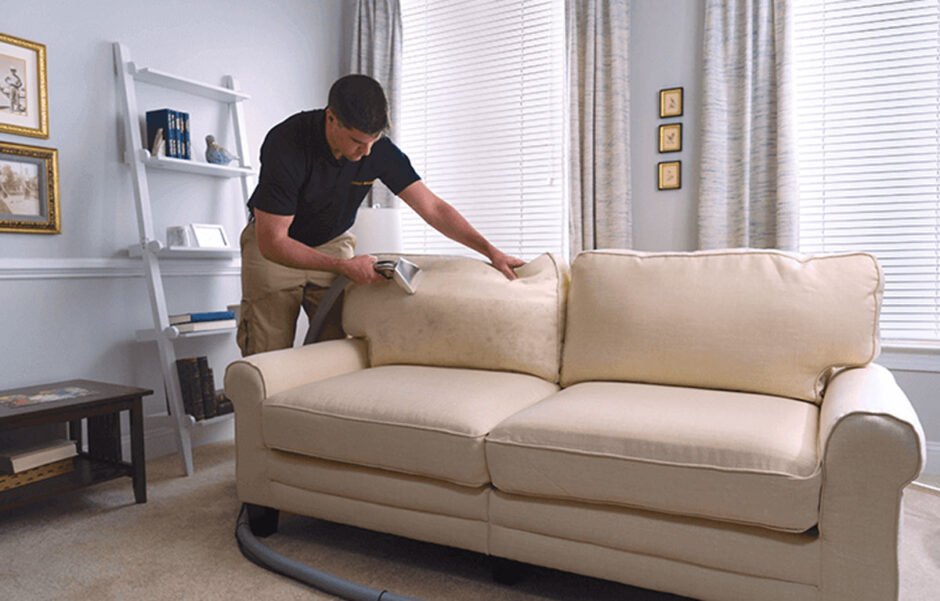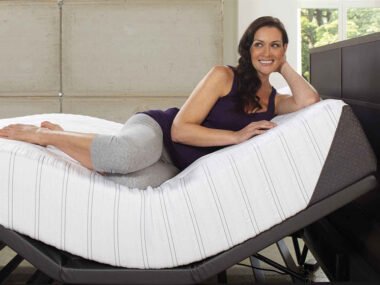Your couch witnesses everything. Movie marathons and midnight snacks. Kids’ art projects and pet naps. Date nights and lazy Sundays. It’s the silent hero of your living space, absorbing life’s beautiful chaos one day at a time.
Yet most people treat their couches like indestructible tanks instead of the delicate investments they actually are.
Time for a reality check.
Fabric Detective Work – Know What You’re Dealing With
Every couch comes with a secret code that most owners never discover. Look for a tag tucked under cushions or along the frame. These cryptic letters determine everything about proper care:
W = Water-based cleaners only Safe for most DIY cleaning attempts with soap and water solutions.
S = Solvent-based cleaners only
Requires specific dry-cleaning products; water will cause permanent damage.
WS = Either water or solvent cleaners The most forgiving category; gives you cleaning flexibility.
X = Professional cleaning only Do not attempt DIY cleaning under any circumstances.
William Morris once said, “Have nothing in your house that you do not know to be useful or believe to be beautiful.” Your couch should be both – but only proper care keeps it that way.
Missing this tiny tag information causes 89% of preventable upholstery damage. Don’t become a statistic.
Emergency Response for Couch Catastrophes
Spills happen. Pets have accidents. Kids create “art” in unexpected places. Your response speed and technique determine whether these incidents become funny memories or expensive disasters.
The Golden Hour Rule
You have approximately 60 minutes to prevent most stains from becoming permanent fixtures in your furniture. After that magical window, stain molecules bond with fabric fibers in ways that even professional restoration struggles to reverse.
Universal emergency protocol:
- Stop the source – No more liquid should be adding to the problem
- Blot immediately – Press straight down, never rub or scrub
- Work from outside edges inward – Prevents stain spreading
- Use clean, white materials – Colored cloths can transfer dyes
- Check the fabric code – Determines which cleaning approach to use
Common mistakes that make everything worse:
- Using hot water on protein stains (sets them permanently)
- Rubbing stains instead of blotting (drives them deeper)
- Using colored towels (dye transfer to upholstery)
- Applying random household cleaners without testing
- Ignoring manufacturer care instructions
Professional couch cleaning NYC services report that 70% of “impossible” stains they encounter were actually manageable problems made worse by incorrect immediate treatment.
Weekly Maintenance That Prevents Major Problems
Dramatic deep cleaning sessions grab attention, but consistent weekly maintenance determines your couch’s actual lifespan and appearance.
Monday maintenance routine:
- Cushion flipping and rotation for even wear distribution
- Quick vacuum of surface crumbs and pet hair
- Spot check for developing stains or wear patterns
Wednesday care session:
- Thorough vacuuming with upholstery attachment
- Crevice cleaning between cushions and frame
- Fabric brushing to restore texture and pile
Saturday deep attention:
- Complete cushion removal and cleaning
- Frame dusting and wood conditioning (if applicable)
- Under-couch area cleaning and inspection
This routine prevents the deep-seated soil accumulation that requires professional intervention. Studies show that well-maintained upholstery lasts 7-15 years, while neglected pieces deteriorate within 3-5 years.
Deep Cleaning Without the Deep Regret
DIY deep cleaning can refresh your couch beautifully or destroy it completely. The difference lies in preparation, technique, and knowing your limitations.
Essential pre-cleaning preparation:
- Remove all cushions and pillows
- Vacuum thoroughly including cracks and crevices
- Test cleaning products in hidden areas
- Ensure adequate ventilation for drying
- Plan for 24-48 hour drying time
Safe DIY cleaning methods by fabric type:
For W (water-safe) fabrics:
- Mild dish soap solution (1 tablespoon per cup of water)
- White vinegar and water for odor neutralization
- Steam cleaning with appropriate equipment
For S (solvent-only) fabrics:
- Commercial dry-cleaning solvents
- Professional-grade spot removers
- Dry powder cleaning systems
For WS (combination) fabrics:
- Start with gentler water-based methods
- Progress to solvents only if necessary
- Always test both types in hidden areas
When to DIY and When to Surrender
DIY is appropriate for:
- Regular maintenance cleaning
- Fresh spills and minor stains
- Surface soil and pet hair removal
- Odor control between professional cleanings
Professional help is essential for:
- Delicate or expensive fabrics (silk, wool, antique pieces)
- Large or set-in stains covering significant areas
- Pet accidents that have soaked into padding
- Smoke damage or strong odor penetration
- Any cleaning situation you’re unsure about
Extending Couch Life Through Smart Habits
Your daily habits impact your couch’s longevity more than occasional deep cleaning sessions.
Protective strategies that work:
- Strategic furniture placement away from direct sunlight
- Regular rotation of cushions and pillows
- Immediate attention to spills and accidents
- Pet training to discourage furniture use
- Quality throws and covers for high-use periods
Damaging habits to avoid:
- Eating messy foods directly on upholstery
- Allowing pets unrestricted furniture access
- Placing couches near heat sources or windows
- Ignoring manufacturer care recommendations
- Postponing necessary professional maintenance
Environmental factors affecting longevity:
- Humidity control – Too much moisture encourages mold; too little causes fabric brittleness
- Temperature stability – Extreme fluctuations stress fabric fibers and frame materials
- Air circulation – Poor ventilation traps odors and moisture
- UV protection – Direct sunlight fades and weakens most upholstery fabrics
Signs Your Couch Needs Professional Intervention
Sometimes DIY efforts aren’t enough. Recognizing when to call professionals prevents minor issues from becoming major expenses.
Clear indicators for professional cleaning:
- Persistent odors despite thorough DIY cleaning
- Visible staining that covers large areas
- Fabric discoloration or fading in patches
- Allergic reactions that worsen when using the couch
- Water damage that has reached cushion cores
Warning signs of structural problems:
- Sagging that doesn’t improve with cushion rotation
- Frame creaking or visible damage
- Spring noise during normal use
- Uneven wear patterns indicating frame issues
Investment perspective: Professional couch cleaning costs $100-300 depending on size and fabric type. Couch replacement costs $800-3000 for quality pieces. Annual professional maintenance represents 3-10% of replacement cost while extending usable life by 50-100%.
Monthly couch health assessment:
- Overall appearance and cleanliness
- Structural integrity and comfort level
- Odor control and freshness
- Wear pattern development
- Stain or damage progression
Your couch represents a significant investment in comfort and style. Like any valuable asset, it rewards careful attention with years of reliable service and maintained beauty.
The difference between couches that age gracefully and those that deteriorate quickly isn’t luck or initial quality alone – it’s the consistent care and intelligent maintenance they receive throughout their lives.
With proper understanding and regular attention, your couch will continue being the centerpiece of comfort and gathering for your family, creating memories while maintaining its beauty and function for years to come.










